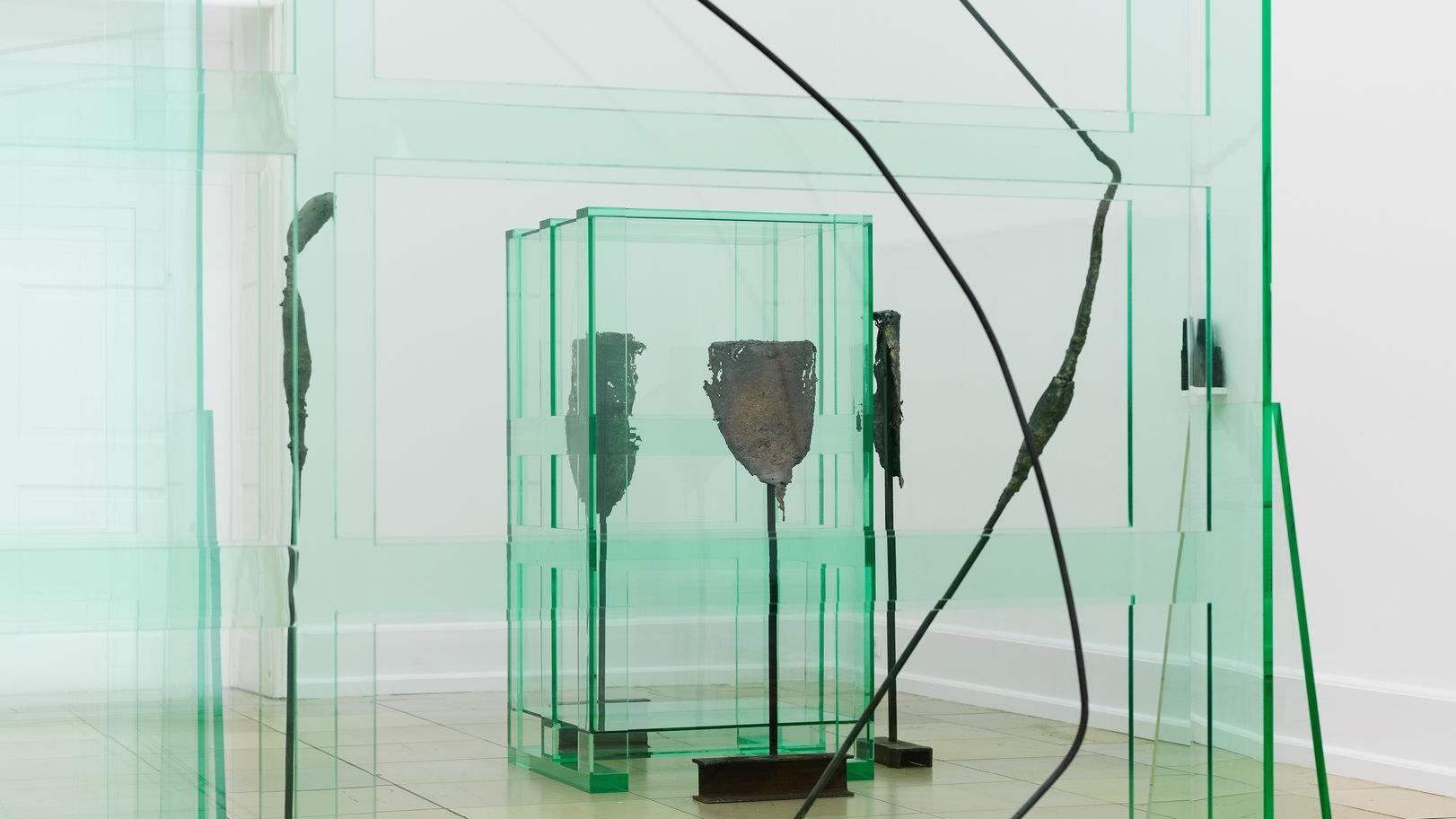Broken Spaces
CHRISTIANE FESER, BENJAMIN HOULIHAN, HARALD KLINGELHÖLLER, CHARLOTTE POSENENSKE, CHRISTINE RUSCHE, TATIANA TROUVÉ
Duration: April 11, to July 18, 2015
Curator: Ludwig Seyfarth
With his book Flatland: A Romance of Many Dimensions, published in 1884, the English mathematician Edwin A. Abbott wanted to explain the concept of the fourth dimension, a subject much discussed at the time, so that even people without scientific expertise would be able to imagine it. Abbott conceived of a world made up of only two dimensions. As inhabitants of three-dimensional space, we can look down from above onto this flat world and identify its forms; but those who live there, caught in a horizontal dimension, can only see lines and dots. Residents of Flatland have a “horizon of perception” that adheres as much to flat expansion as our world is caught in a three-dimensional box, which is still the foundation for most digitally generated spaces.
Abbott’s attempt to present new spatial concepts to us has found many parallels in modern art. Here, unified, perspectival space was consistently counteracted, broken up, and multiplied. Instead of a three-dimensional illusion, it is as if we are looking at a fragmented Flatland from multiple perspectives at the same time.
The exhibition Broken Spaces shows how artists today and from the recent past play with projected, folded, or broken planes and spaces, while the boundary between two- and three-dimensionality is as ambivalent as that between object and space. Even if precise mathematical and geometrical calculations form the basis, the sensorial result is often difficult to trace back to its original starting point, and reveals surprising poetic and creative qualities.
Modernism’s legacy of Constructivism, a lasting source of inspiration for many artists, is neither cited nor varied; rather, its relevance to the present day is questioned. In doing so, the artists make use of the possibilities offered by digital simulations, as well as their repercussions for “analogue” realizations.
Three-dimensional objects can look like drawings in space. Plastic structures are based on transformed planar forms, such as silhouettes cast by shadows. They create their own spheres and notions of space inside the exhibition rooms, manifesting either physically or immaterially before the mind’s eye.
An accompanying catalogue will be published.
Accompanying program
, 7 pm
Broken Spaces: Opening
, 7 pm
Long night of the Museums
CHAKRAPENG! Live-Performance with several actors by Maren Maurer starting at 8 pm, DJ Criss Source (Ambient/House) starting at 9 pm / € 14 Access to all venues of the Long Night of the Museums
, 7 pm
Tandem Tour
TANDEM TOUR In conversation with experts on space, staff members of KAI 10 lead through the exhibition: Julia Schleis (Project management KAI 10) with Karsten Weber (Architect, Rheinflügel)
, 7 pm
Artist Talk
with Harald Klingelhöller and Christine Rusche, hosted by Ludwig Seyfarth (Curator of the exhibtion)
, 7 pm
Tandem Tour
In conversation with experts on space, staff members of KAI 10 lead through the exhibition: Marion Eisele (Project management KAI 10) with Dr. Renate Buschmann (Director imai – inter media art institute)
, 7 pm
Talk with Dr. Burkhard Brunn
TALK with Dr. Burkhard Brunn (Estate Charlotte Posenenske) on Charlotte Posenenske and Minimalism in art and society, hosted by Ludwig Seyfart
, 3:30 pm
Broken Spaces: Tandem Tour: Finissage
TANDEM TOUR In conversation with experts on space, staff members of KAI 10 lead through the exhibition: Ludwig Seyfarth with Kathleen Rahn (Director Kunstverein Hannover)


